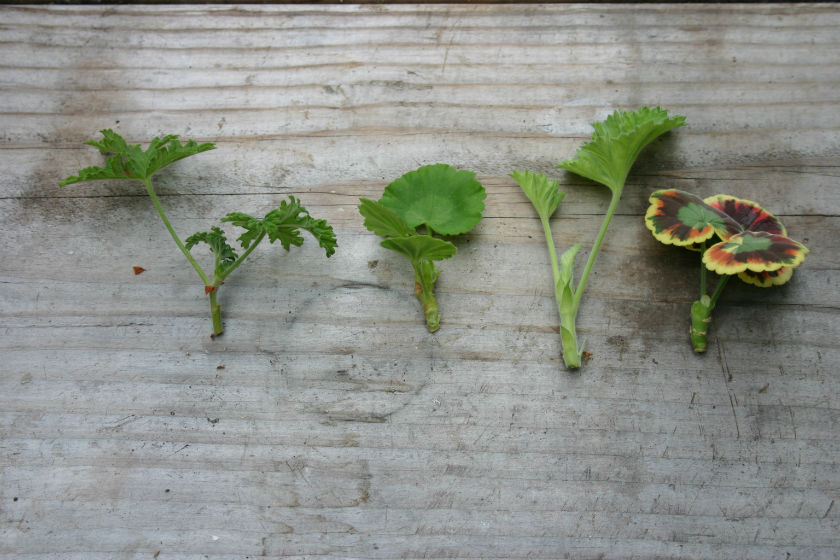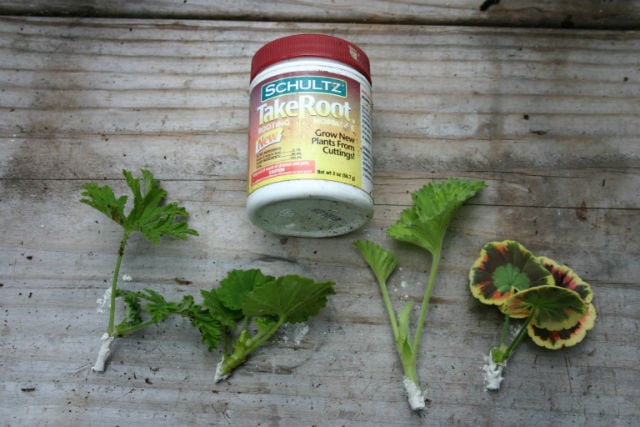 If you’ve ever brought geraniums or pelargoniums into your greenhouse at the end of summer, you probably know how leggy the plants become in winter’s low light levels. Come spring, you can cut back these plants significantly to get them started anew, but the initial result is an ugly brown stem visible in your hanging baskets or containers. To avoid this problem, why not try something different this winter by propagating new geraniums from cuttings off last year’s plants? The procedure is easy, and your springtime plants will look great right from the start.
If you’ve ever brought geraniums or pelargoniums into your greenhouse at the end of summer, you probably know how leggy the plants become in winter’s low light levels. Come spring, you can cut back these plants significantly to get them started anew, but the initial result is an ugly brown stem visible in your hanging baskets or containers. To avoid this problem, why not try something different this winter by propagating new geraniums from cuttings off last year’s plants? The procedure is easy, and your springtime plants will look great right from the start.
Here’s what to do. First, take some pots (I prefer a four-inch-square plastic one for each cutting) and fill them with good quality, slightly moist potting soil. To lighten the planting medium, mix 30% perlite, vermiculite, or sand with 70% potting soil. Then use a pencil to make a hole about one inch deep in the middle of each pot. If you’re propagating several different cultivars, now is the time to prepare pot labels so the cultivars can be easily identified.
Next, find a growing tip on an existing geranium and cut it off to a length of about two to three inches. It doesn’t matter whether you pick a growing tip with a flower head on it or one without a flower. Either will serve your purpose. I find it easiest to cut ten or twenty “slips” at once, each of which gets trimmed so that it has only one to three leaves above a short length of exposed stem. The bottom of each slip is then moistened and dipped in hormone rooting powder.
Set each slip in an appropriately labeled pot, and press the soil firmly around it. If you have a heating pad in your greenhouse to place the pots on, keep the bottom temperature around 50? to 60?F to encourage growth during winter. Don’t put the cuttings in direct sunlight or the leaves will scorch and drop off. A location under a wire potting bench is fine until the slips begin to root, which will be after about two to three weeks. Water your cuttings gently whenever the soil feels slightly dry. The soil should be moist enough to keep the roots growing, but not soaking wet. When the new plants are growing strongly both above and below ground, you can pot them up into hanging baskets or containers ready for next season’s blooms.
to place the pots on, keep the bottom temperature around 50? to 60?F to encourage growth during winter. Don’t put the cuttings in direct sunlight or the leaves will scorch and drop off. A location under a wire potting bench is fine until the slips begin to root, which will be after about two to three weeks. Water your cuttings gently whenever the soil feels slightly dry. The soil should be moist enough to keep the roots growing, but not soaking wet. When the new plants are growing strongly both above and below ground, you can pot them up into hanging baskets or containers ready for next season’s blooms.










